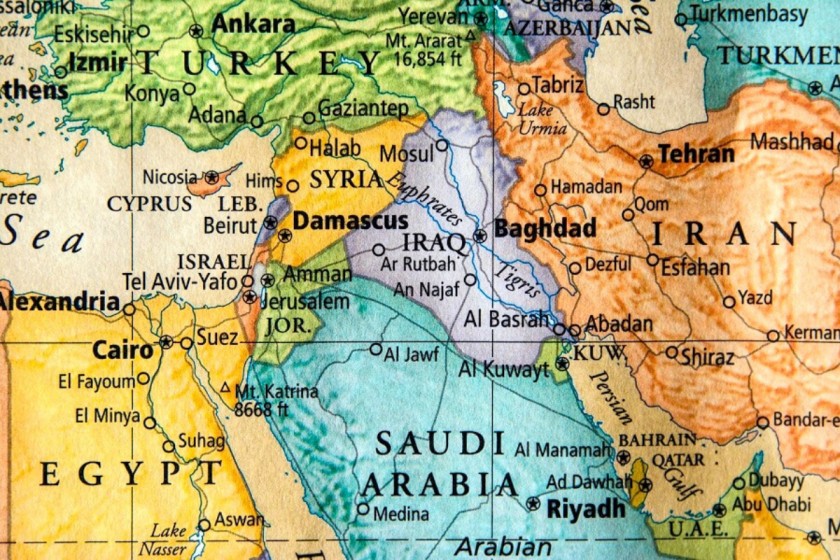- May 3, 2024
Analyzing the ripple effect: How Middle East conflict can impact the Indian economy

Geopolitical tensions, especially Iran-Israel conflict, pose risks to India’s inflation and economic stability, warns ICRA’s Chief Economist Aditi.
Since the Covid-19 pandemic receded, the global arena has been beset by a series of geopolitical issues. Even as the Russia-Ukraine and Israel-Hamas conflicts continue, the recent tensions between Israel and Iran have become a new source of concern and uncertainty for the region and the rest of the world. While the situation remains fluid at present, a further step up in tensions could have macroeconomic implications through various channels, such as sentiment, financial flows, and commodity prices.
One of the most rapid channels of transmission of stress in the Middle East to the rest of the world is through crude oil, a commodity India imports in large measure. While India does not import any crude from Iran owing to the sanctions imposed by the US in 2019, there is a threat that Iran may close the Straits of Hormuz. This is the main route of transport for crude oil from the Middle East, which hold major share in oil imports to India.
Predictably, the recent escalation of geopolitical tensions in the Middle East contributed to a spike in crude oil prices. Higher oil prices pose upside risks to our WPI inflation forecast of 3.3 per cent for India for FY25, and to a smaller extent to our CPI inflation projections of 4.6 per cent for this fiscal. Fuel items have a significantly lower weight in the CPI (4.2 per cent; including petrol, diesel, LPG and kerosene) vis-à-vis the WPI (10.4 per cent; including crude oil, natural gas, and crude derivatives). Consequently, a change in crude oil prices transmits faster into the WPI compared to the CPI.
The quantum of the impact on the CPI inflation trajectory is also influenced by the extent of the change in the retail selling prices (RSPs) of petrol, diesel and LPG.
We estimate that for every 10 per cent increase in crude oil prices, the WPI inflation rises by 80-100 bps, against the 20-30 bps uptick in the CPI inflation, assuming transmission into RSPs of fuels takes place.
Transportation costs
Additionally, higher fuel prices would lead to an increase in transportation costs, thereby leading to a second-round impact by pushing up the prices of goods and services. A sustained surge in crude oil prices could also exert a drag on GDP growth during the fiscal, both through curtailed consumption as well as weaker corporate margins.
The impact of the tensions between Israel and Iran on commodity prices other than crude oil has been limited so far. This in contrast to the situation in the first four-five months after the start of the Russia-Ukraine war, when commodity and crude oil prices had risen by around 35 per cent over that period.
We estimate that a $10/barrel increase in the average price of the Indian crude oil basket is likely to push up the Current Account Deficit (CAD) by 0.3 per cent of GDP, although it is unlikely to exceed 1.5 per cent of GDP in the current fiscal year. An escalation of the conflict may impact foreign portfolio investors inflows to India.
Overall, Iranian imports are not significant for India, except for some items such as dye intermediates and asbestos. However, the same can be easily substituted by other countries and hence are not critical for India. In terms of exports, Iran was one of the major export destinations for basmati rice and tea from India in FY23; however, its share went down significantly in FY24 and the ongoing geopolitical tensions may further constrain such exports to Iran in FY25.
Financial flows from Iran to India are marginal. However, an escalation of the ongoing conflict may impact FDI, FPI and remittances from neighbouring Middle East countries like the UAE, Saudi Arabia, Qatar, Oman, Bahrain and Kuwait, which have significant share in all these categories for India. These countries also house around 50 per cent of India’s total stock of migrants. Further weak global sentiment may affect FDI and FPI inflows from advanced economies as well.
While the direct impact on the fiscal health of the government of India would be limited, government security (G-sec) yields may remain sticky in a scenario of sustained high crude oil prices. The decline in the planned G-sec supply in H1 FY25 and the higher demand owing to the Bond Index inclusion were expected to moderate yields in Q1 FY25. This anticipated softening is now likely to be delayed.While the IMD’s forecast of an above-normal monsoon has provided some relief, higher crude oil prices have added to the risks, reducing the likelihood of early rate cuts.
The writer is Chief Economist, Head-Research & Outreach, ICRA.
